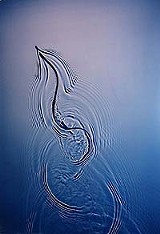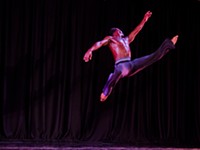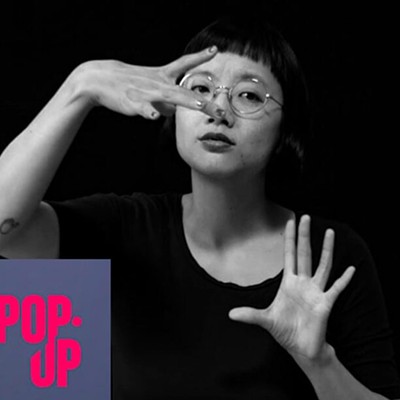[
{
"name": "500x250 Ad",
"insertPoint": "5",
"component": "15667920",
"parentWrapperClass": "",
"requiredCountToDisplay": "1"
}
]
I should confess that I have long been one of Adam Fuss's biggest fans. So I came to this show with high expectations. I was not disappointed.
Scott Laird, the gallery director, and Deborah Ronnen, a prominent local art dealer, have taken a side room at the Visual Studies Workshop and transformed it into a little temple of Fuss. It offers a partial survey of the artist's output over the last 10 years or so. Partial because some of my favorite Fuss images --- his water ripples, rabbits with their guts entwined, babies splashing in water --- are absent. But considering that these pictures are drawn only from Rochester collections, including that of George Eastman House and of Deborah Ronnen herself, they nevertheless form an impressive array. For the full monty you must travel to the Museum of Fine Arts in Boston, where 55 of Fuss's works have been gathered for his first major American retrospective.
Fuss is the contemporary master of the photogram --- images produced by positioning objects directly onto a piece of photographic paper and then exposing the whole to light. It has also been known as photogenic drawing, rayography, or more recently as cameraless photography. The technique dates back to the very beginnings of photography, when in the 1830s Fox Talbot laid leaves and pieces of lace onto sensitized paper before exposing them to sunlight and recording the shadows they cast. Subsequent artists --- Christian Schad, Man Ray, and Moholy-Nagy --- resuscitated the process with their own innovations. But the form was largely neglected until Fuss arrived in the late '80s with his own large-scale and often brightly colored revelations.
From 1993, Untitled (Nasturtium) is one of the earliest pieces in the show. An entire nasturtium, roots and all, was placed onto a 40-by-30-inch piece of Cibachrome paper. Then Fuss flashed it with just the right amount of light to penetrate the fibers and etch the plant's colors into the photographic emulsion. The result is a devastatingly gorgeous mass of green leaves punctuated by small dabs of red and orange flowers, whilst the pink roots dangle palely below.
From the same year is Untitled (Spiral). This too, with its neon circles of orange, almost hums with vitality. But its source was quite artificial: A small flashlight was suspended from a ceiling and allowed to swing in ever decreasing circles towards the center of another large sheet of Cibachrome. Fuss waited until the flashlight came to a complete stop below its pivot, so the middle of the image, exposed for longer, is a blazing white hole of light. Fuss has made a series of these spirals in different colors by fixing variously hued gels over the bulb of the flashlight. They have been widely exhibited to great critical acclaim.
A strong subtext of spirituality runs throughout Fuss's work --- he's interested particularly in the Sufi religion --- and the spirals have often been read as tunnels leading to a bright light or, as one reviewer put it, "deep vortices of the soul." This may be a genuine intention, and I can certainly recognize a vaguely astral sense of eternity in the geometry of the piece, but ultimately I find myself mesmerized on a purely aesthetic level. As Fuss once said, "It's only when I make a picture that I have to keep looking at that I feel I've succeeded... Like the sensation of looking into the face of someone very beautiful."
In what is perhaps the best picture of the show, Untitled (Snake), the creature wriggles through a shallow pool of water. It's possible to read it as sperm signifying birth or the serpent in the Garden of Eden --- not altogether inappropriate for an artist named Adam. But what really enthralls me is the sheer deliciousness of the shades of blue, the exquisite detail of the ripples.
Themes of mortality crop up repeatedly in Fuss's work. His latest pieces --- represented here by photograms of lacy christening gowns, a large butterfly, and billowing trails of smoke --- are contained by the collective title of My Ghost. Yes, yes, the butterfly is a classic symbol for the brevity of life and the somewhat macabre Victorian christening gowns speak of mourning and the afterlife. But it's Fuss's least concept-laden images of smoke that are most successful. They are evanescent and funereal but first and foremost they are, like the show as a whole, beautiful.
Adam Fuss: Selected Works continues through October 21 at Visual Studies Workshop, 31 Prince Street. Hours: Tuesday through Saturday, noon to 5 p.m. Admission: $2, $1 for students. 442-8676.
Latest in Art
More by Jonathan Lewis
-
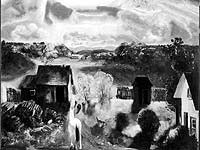
Mellow Bellows
May 7, 2003 -
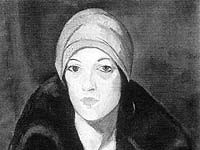
Art is long
Apr 2, 2003 -
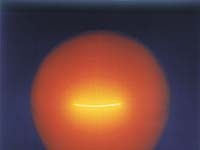
When art speaks louder than words
Mar 12, 2003 - More »
